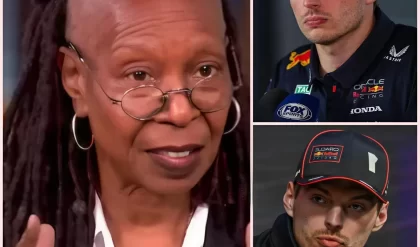
A photo of the children’s book In My Daddy’s Belly by Logan Brown has gone viral online, igniting intense discussion across the U.S. over the presence of so-called “woke” books in school libraries. With its colorful cover and tagline “The story of a transgender dad giving birth,” the book has become a lightning rod in America’s broader cultural and educational debates.
Below the image is a provocative question:
“Do you agree with banning all woke books in our schools?”
This question is not just rhetorical—it encapsulates a growing national divide over what content is appropriate for children, what role schools should play in shaping identity, and how far parental rights should extend.
📖 What Is “In My Daddy’s Belly” About?
In My Daddy’s Belly tells the story of a transgender man—Logan Brown—who becomes pregnant and shares the experience with his child. Written to reflect the real-life journey of its author, the book aims to represent nontraditional families and promote inclusion for transgender parents and their children.
The book includes tips for parents, helpful resources, and frequently asked questions, making it more than just a story—it’s also a tool for education, conversation, and empathy. Supporters say the book encourages understanding and acceptance, especially for children growing up in diverse family structures.
💬 Why Is the Book Controversial?
The controversy centers not just on this book, but on what it represents.
Critics argue that materials like In My Daddy’s Belly promote what they call “gender ideology” to young children, undermining biological science and confusing age-appropriate boundaries. Some parent groups and lawmakers have pushed to ban books discussing LGBTQ+ topics in schools altogether, labeling them as “woke,” “radical,” or “politically driven.”
Supporters, however, argue that such books are essential for fostering inclusion, reducing bullying, and reflecting the diversity of students’ lived experiences. To them, banning these books is a form of censorship that erases marginalized voices and prevents children from learning about real-world diversity.
⚖️ The Broader Cultural War in Education
This debate is part of a larger culture war that has swept through school boards, state legislatures, and communities across the United States. In recent years:
Dozens of states have passed or proposed laws aimed at restricting content related to race, gender, and sexuality.
Books by and about LGBTQ+ authors have topped banned book lists, according to the American Library Association.
Terms like “woke,” “critical race theory,” and “parental rights” have become powerful political tools.
The push to remove “woke books” often intersects with political campaigns and conservative media narratives, framing the issue as a fight for the soul of American childhood.
🧠 What Does “Woke” Even Mean?
The term “woke” originally came from African American Vernacular English (AAVE) and meant being aware of social injustice. Over time, it has been weaponized in political discourse.
Today, “woke” is used by critics to describe progressive ideas around race, gender, identity, and inequality. However, its vague and subjective nature means it can be applied to almost anything—from books and movies to school lessons and corporate policies.
When used in the context of banning books, it often refers to literature that challenges traditional norms or promotes diversity.
📚 Should Schools Ban “Woke” Books?
There are compelling arguments on both sides.
🚫 Arguments For Banning:
Parents should have control over what their children learn, especially regarding sensitive topics like gender identity.
Some believe young children are too impressionable to handle complex themes such as transgender pregnancy or nonbinary identity.
Critics fear such content could be politically motivated or undermine family values.
✅ Arguments Against Banning:
Schools serve diverse student populations, including children with LGBTQ+ family members.
Banning books restricts intellectual freedom and can silence important perspectives.
Age-appropriate exposure to different family structures may lead to greater empathy and reduced bullying.
🧾 The Role of Parents, Educators, and Librarians
The key to resolving the debate may not lie in absolute bans or full inclusion, but in open communication and collaboration between educators, parents, and students.
Some schools have adopted opt-in or opt-out policies for sensitive materials, allowing parents to choose what their child is exposed to without removing access for others. Others have diversity review boards to assess books with community input.
But the question remains: Who gets to decide what children read—and what should that decision be based on?
🌍 Final Thoughts: A Mirror to Society
The image of In My Daddy’s Belly and the question “Should woke books be banned?” forces us to look deeper at what kind of world we want our children to grow up in.
Is it one where they are shielded from diversity—or one where they are prepared to navigate it with understanding? Is protecting children about limiting what they see, or teaching them how to think critically and compassionately?
Whether you see In My Daddy’s Belly as dangerous propaganda or vital representation, one thing is clear: Books have power. The power to provoke, to educate, to inspire—and, sometimes, to divide.





